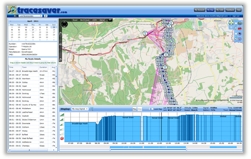Nokia has announced that its Ovi Store has grown by nearly eight times over the last year and now reaches up to 5 million downloads per day, propelled by the latest Symbian devices – the Nokia N8, Nokia C6-01, Nokia C7 and Nokia E7 – which are said to account for about 15 percent of the daily downloads.
Increased demand for apps from the approximate 200-million-strong Symbian consumer base has seen the Ovi Store catalogue grow to more than 40 000 apps, with about 1000 added per week. This momentum has resulted in 158 developers from 41 countries now surpassing the million download milestone each for their apps.
Nokia’s new monetization opportunities for developers are tailored for local markets and include integrated operator billing with 112 operators in 36 markets, more than 25 times more operator billing integrations than Nokia’s nearest competitor. Ovi Store has seen integrated operator billing increase consumer transactions by up to four times and this, coupled with Nokia’s beta programs for in-app billing and in-app advertising, means more revenue opportunities for developers on Symbian.
These opportunities are also being extended to Nokia Series 40 devices, which will enable apps for the next billion mobile phone consumers. The refreshed Ovi Store experience, previously available only for the new Symbian devices, has resulted in more than 35 percent growth in downloads for Series 40 devices in the last two months, making up about a quarter of the total downloads.
Developers and publishers, large and small, are using Ovi Store’s global reach and rapid growth to cultivate new communities. The communities are driven by deeper user connections within their apps, further driving downloads and potential monetization opportunities for developers, says Nokia.
“As consumers continue to download Ovi Store content with increasing frequency, developers have an immediate opportunity to reach consumers worldwide and capitalize on the approximately 150 million Symbian devices we plan to ship in the coming years,” said Tero Ojanpera, Nokia’s Executive Vice President of Services and Developer Experience. “This momentum continues to demonstrate consumers’ appetite for Nokia’s global and locally relevant apps, and will help us plan the future apps store experience for improved and new Symbian devices, as well as Nokia smartphones based on the planned collaborative opportunities with Microsoft.
“Nokia’s Ovi Store has given our Angry Birds a fighting chance to defeat those havoc-wrecking green pigs and share the joys of clearing levels from every corner of the globe,” said Mikael Hed, CEO of Rovio. “We look forward to continuing development for Nokia’s latest Symbian devices and working with Nokia and the future of the Windows Phone platform.”
“In about a year, Nokia’s Ovi Store has gone from approximately 1 million downloads per day to up to 5 million downloads per day today, and the velocity appears to be increasing, fueled largely by Series 40 and new Symbian devices,” said Josh Martin, senior analyst, Strategy Analytics. “At this new rate, that’s nearly 2 billion annualized downloads and with the company’s new direction, app developers can surely capitalize on this growth today and in the future with the estimated approximately 150 million Symbian devices that Nokia expects to deliver.”



